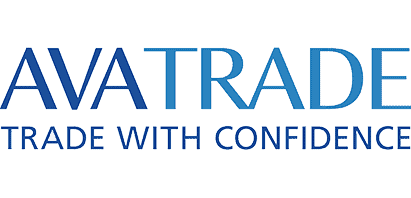Oil Trading | How to Trade Oil in 2025
Oil is one of the most popular commodities for day trading along with gold, silver, and soybeans. The liquidity, volatility and the fundamentals of this commodity make the ‘Black Gold’ a great choice for those who want to activate day/swing trading strategy.
Oil is the world’s main source of energy, meaning there are constant news and events related to the commodity, with politics being a major factor in oil’s market performance. Fortunately, with globalization and changes in the technology of financial markets, it’s quite easy to get access to an online trading platform that provides oil futures.
In this article, we will provide a quick guide on how to get started trading oil in the easiest and fastest way. Moreover, we will explain the difference between Crude and Brent oil, understand how the oil markets work, include oil trading strategies and find the best broker for oil trading.
-
-
How to Trade Oil in 3 Quick Steps:
In a rush? You should follow three easy steps in order to open an account and start trading oil.
Step 1: Open an Oil Trading Account
There are several ways to start trading oil. The most conventional way to trade oil is through CFDs on CFD brokers.
In simple terms, Contract for Difference (CFD) is a contract between a buyer and a seller through a derivative market to speculate on the price of certain security without owning the asset.
Oil is a popular commodity, and therefore, most of the brokers in the industry provide oil trading. Below, you will find the best CFD brokers that offer oil trading:
1. Plus500 - Competitive Spreads for Oil Trading
Plus500 is another popular CFD broker offering competitive spreads and a user friendly trading platform. The broker provides its clients with a wide range of more than 2000 financial assets and a leverage ratio of up to 1:300.
Plus500 was founded in 2008 and has gained regulatory approval in several parts of the world. The broker is regulated by several international financial authorities including the Australian Securities and Investments Commission (ASIC), authorized & regulated by the FCA, and the Cyprus Securities and Exchange Commission (CySEC.
Our Rating

- Offers a user friendly+ trading platform
- Plus500 is regulated and listed on the London Stock Exchange (LSE)
- It offers tight spreads
- Not available in the United States and does not support MetaTrader
- Charges inactivity fee
- Scalping and Hedging is forbidden and Plus50o doesn't offer Social or Signal Trading
CFDs are complex financial instruments and 80.5% of retail investor accounts lose money when trading CFDs. Sponsored ad2. AvaTrade - Good Alternative Oil Trading Broker
If you are looking for a CFD broker with experience and a good reputation among day traders, AvaTrade is a great choice. The broker is regulated by several financial authorities globally including top regulators such as the Central Bank of Ireland, the Australian Securities and Investments Commission (ASIC), the British Virgin Islands Financial Services Commission (BVI), the Financial Service Agency, the Financial Futures Association of Japan, and South African Financial Sector Conduct Authority (FSCA). In addition, AvaTrade offers a selection of trading platforms for all levels of traders: MetaTrader4, MetaTrader5, AvaOptions, AvaTradeGo.
Our Rating
- Highly regulated and licensed in a number of financial jurisdictions.
- AvaTrade offers automated trading
- Offers MQL5, a fully integrated MT4 signals service
- Low selection of products
- Does not accept US traders
Step 2: Learn How the Oil Market Works
What is Crude/Brent Oil?
There are some notable differences between WTI crude oil and Brent crude oil: the extraction location, the best Bitcoin exchanges where the commodity is traded, prices, benchmark, contract specifications, geopolitical risks, and the composition of the oil extracted.
It is important to note that in North America, the benchmark for oil futures is WTI crude oil, also known as West Texas Intermediate crude oil futures which are traded on the New York Mercantile Exchange (NYMEX) and Chicago Mercantile Exchange (CME). In Europe and most parts of the world, the benchmark is Brent crude oil, which is traded on the Intercontinental Exchange (ICE).
Yet, even though there are substantial differences between the two types of oil markets, Brent and Crude oil have many similarities and typically trade in the same direction. Furthermore, the spread between Brent and Crude oil is one of the most popular spreads in the markets and is used by day traders as a great indication for predicting future prices.
How the Oil Market Works
Crude oil futures contracts were first introduced on the New York Mercantile Exchange (NYMEX) in 1983. These contracts were, and remain, very important for hedging and significantly improved oil’s global trade. Within the years, futures exchanges added different types of contracts including oil options contracts. In simple terms, oil’s future contract is an agreement between a buyer and a seller to exchange a certain amount of oil barrels at a specified date and price. For example, if a buyer agrees to buy a July crude oil futures contract, the other party commits to deliver 1,000 barrels of oil at the specified price of the contract.
The oil market is influenced by supply and demand, similarly to any other market. Yet, there are notable factors that drive crude oil prices such as geopolitical events, OPEC, crude oil inventories, global economic growth/recession, natural disasters, and global trade conditions.
The price of oil is affected by consumption and vice versa, meaning in times of recession oil prices drop significantly, while on the other hand, high oil prices increase consumption costs and might reduce consumption. Regardless, oil traders must understand how supply and demand affect the price of oil. In addition, some economic and political events highly influence the price of oil and day traders have to take into consideration the following events:
- The Organization of the Petroleum Exporting (OPEC) meetings
- The weekly U.S. Energy Information Administration (EIA) Petroleum Status Report released each Wednesday at 10:30 a.m. Eastern Time.
- The American Petroleum Institute (API) report released every Tuesday at 4:30 p.m. Eastern Time.
- The Commodity Future Trading Commission Report (CFTC)
- Non-farm payrolls
Step 3: Choose an Oil Trading Strategy
If you want to play the oil markets, you have to find the right broker with low spread and commissions and adapt your own trading style. Meanwhile, here are four tips that can help you make the most of your oil trading account.
Day/Swing trading
Oil is a volatile commodity subject to dramatic price swings, which makes it a great asset for day/swing trading. Day trading is a trading technique in which the trader closes all positions before the end of the trading day. Swing trading a trading strategy in which a trader tends to hold the position for 2-3 trading days.
Technical and fundamental analysis
Oil is highly affected by market news and events but also influenced by technical analysis considerations due to the popularity and high liquidity of the commodity. Consequently, the combination of technical and fundamental analysis is essential for oil trading.
There are many technical analysis indicators that you can use to effectively trade oil. Most of these indicators are an indication of high volumes and signal entry points. Those include Fibonacci, Pivot, Moving Averages (MA), Bollinger Bands, and MACD.
Risk/Reward ratio
Most trading experts will tell you that oil can be highly lucrative but also highly unstable. A good risk/reward ratio of 1:2 or 1:3 will help you manage your risk and maximize your profits.
Brent-Crude Spread
As explained earlier, Brent-Crude (Brent/WTI) spread is one of the most popular and used spreads by day/swing traders. You will find plenty of strategies and trading ideas related to the BrentCrude spread and can provide an indication for the future movement of one of the oils.
Step 4: Open an Oil Trade
There are many online CFD brokers to choose from, however, it is extremely important to find a reliable regulated broker that ensures your funds are safe and market execution is good.
So complete your due diligence, find a CFD broker that caters to your needs, and open an account.
Conclusion
Oil trading can be done in several ways – either by owning the physical form of the commodity or through Contract for Difference that allows you to speculate on the price of the commodity without actually owning oil barrels. It is important that you find a reputable broker that charges low commissions and provides high-speed execution. The next step involves forming a trading plan, based on specific rules and conditions of the oil market.
While it takes time before you begin to generate consistent profits, oil is one of the best commodities for day trading. Remember, oil trading is a risky business but can be highly rewarding if used correctly.
FAQs
What is the best time to trade crude oil?
Crude oil is traded on several futures exchanges worldwide, meaning it is possible to trade oil at any time of the day. Yet, the overlap of the European markets and the US markets is the volatile time of the day and occurs between 1 pm GMT and 4 pm GMT.
Is crude oil traded 24 hours a day?
Yes, crude oil is being traded on the Chicago Mercantile Exchange for nearly 24 hours a day during weekdays.
What are the main factors that affect oil prices?
Oil prices are influenced by vast-array of factors. Those include political developments, seasonality, oil production and inventories, health condition of the global economy, conflicts and wars, and technological developments (solar energy, natural gas discoveries, etc.).
How much money do I need to invest to start trading crude oil?
Technically, there’s no minimum amount required to start trading oil, however, you most likely need to get started with at least $200. We remind you that you can use the technique of leveraging your position by trading with online CFD brokers.
See Our Full Range Of Trading Resources – Traders A-Z
Tom Chen
View all posts by Tom ChenTom is an experienced financial analyst and a former derivatives day trader specialising in futures, commodities, forex and cryptocurrency. He has a B.A. in Economics and Management and his work has been published on a range of publications, including Yahoo Finance, FXEmpire and NASDAQ.com.
WARNING: The content on this site should not be considered investment advice. Investing is speculative. When investing your capital is at risk. This site is not intended for use in jurisdictions in which the trading or investments described are prohibited and should only be used by such persons and in such ways as are legally permitted. Your investment may not qualify for investor protection in your country or state of residence, so please conduct your own due diligence. Contracts for Difference (“CFDs”) are leveraged products and carry a significant risk of loss to your capital. Please ensure you fully understand the risks and seek independent advice. This website is free for you to use but we may receive commission from the companies we feature on this site.
Copyright © 2025 | Learnbonds.com
We use cookies to ensure that we give you the best experience on our website. If you continue to use this site we will assume that you are happy with it.Scroll Up




